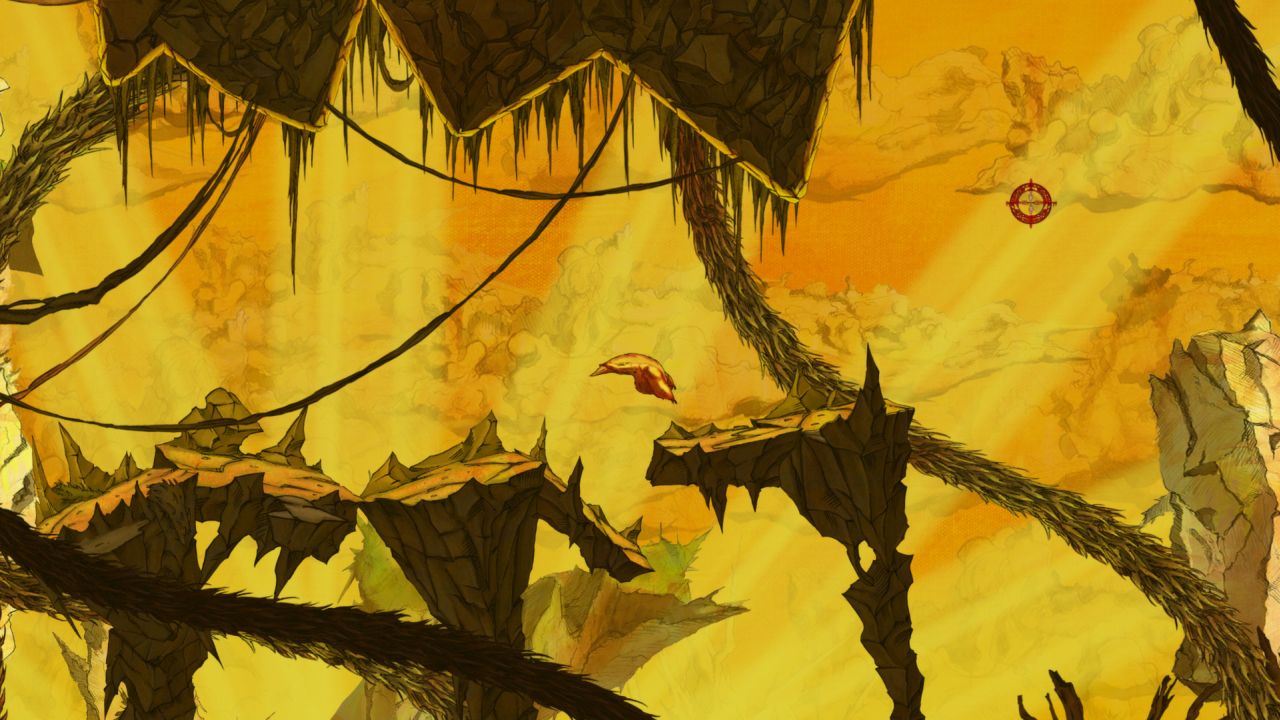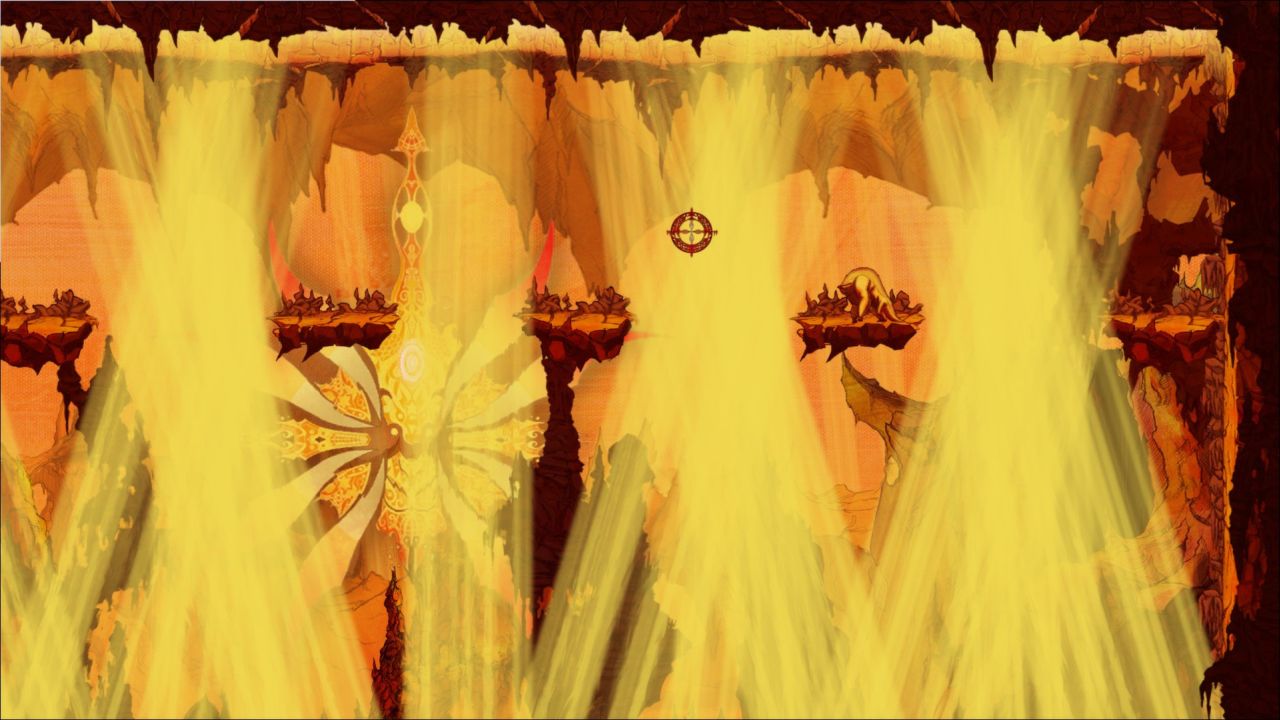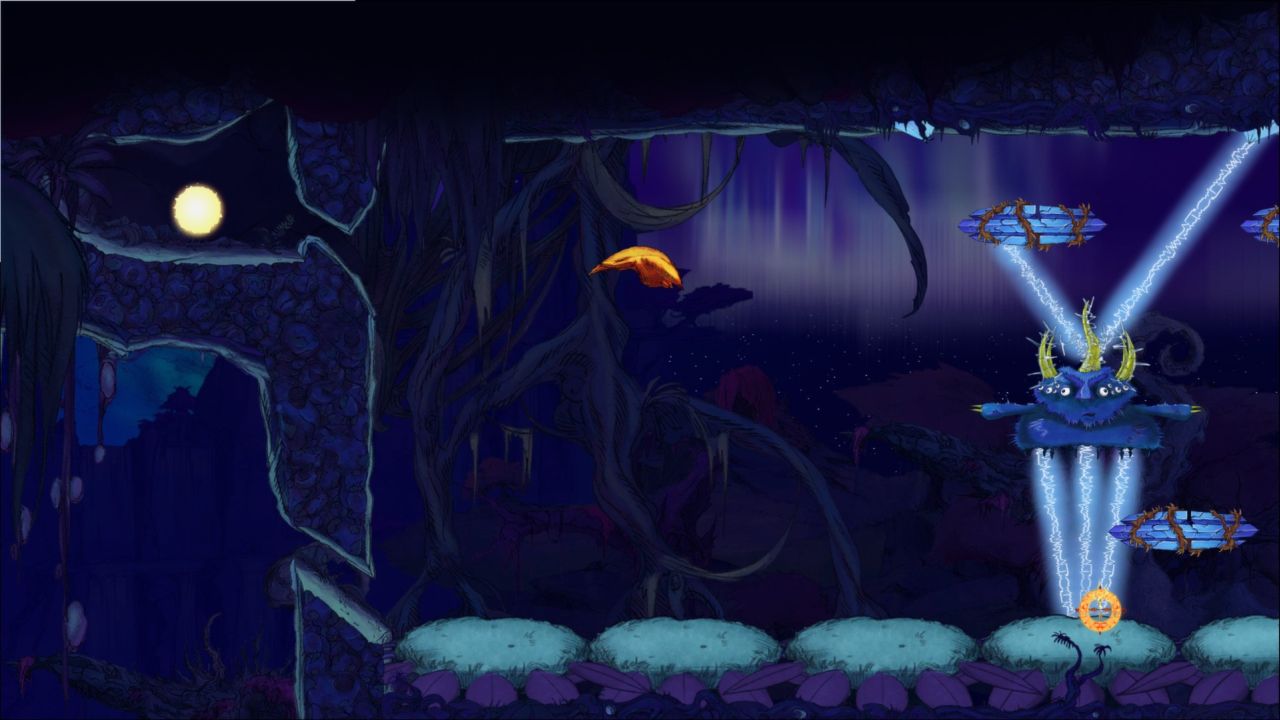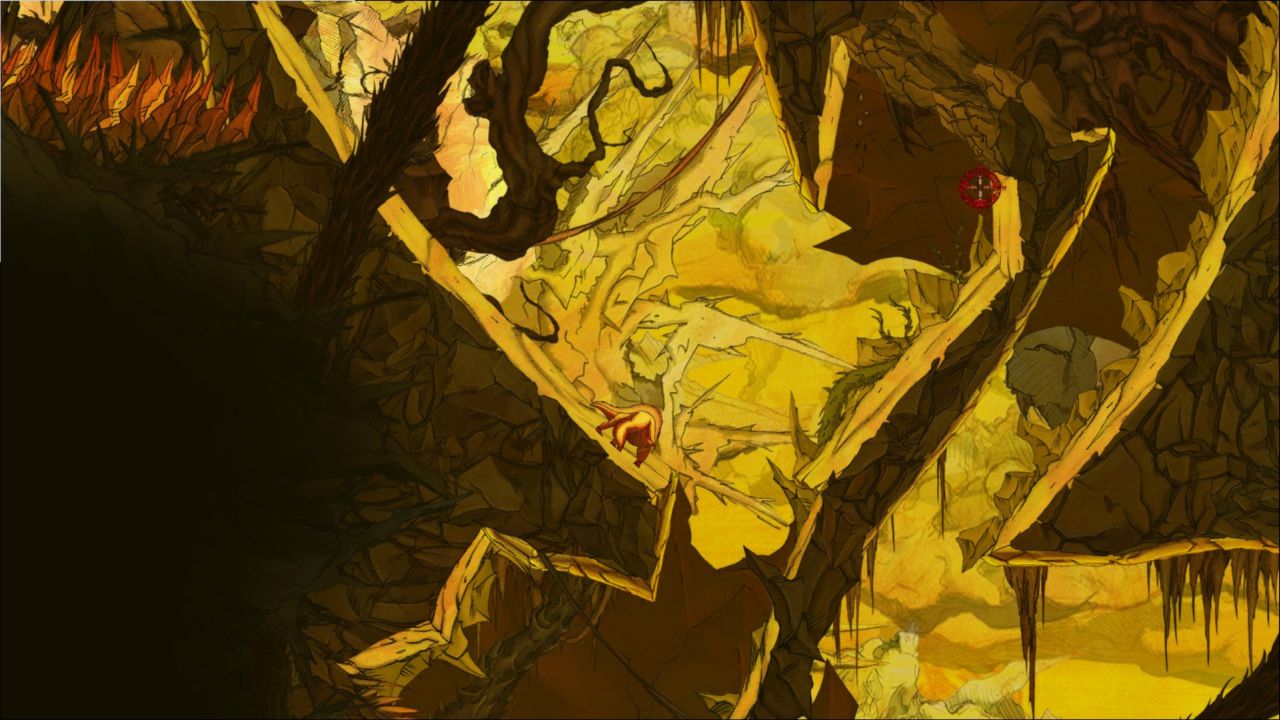Aaru's Awakening Review
Hard to progress, hard to control, and hard to recommend
As Triple-A budget games become more and more expensive to produce with each passing year, they must seek to appeal to an increasingly general audience. A common criticism concerning this mainstream focus is the dearth of difficulty; on any given forum, you can surely find a veteran wistfully lecturing “youngsters” about when “games used to be hard.” Almost seemingly in direct response to these concerns, there has been a rise in the independent games market of “masocore” titles: games designed with extreme challenge in mind, harking back to the unforgiving cartridges of yore. Lumenox Games’ debut effort, Aaru’s Awakening, is one of these brutally challenging independent titles; unfortunately, its design doesn’t offer the precision it demands from its players. A lack of polish, imprecise controls, and a conflict between art design and playability leads Aaru’s Awakening to become an immensely frustrating and unenjoyable experience that is impossible to recommend.

The world of Aaru’s Awakening is presented as one of an uneasy truce between the mysterious fraternal entities of Dusk, Dawn, Night, and Day. After eons of war between these figures, the exact nature of which remains unexplained, they formed a pact to share control of the world in shifts, leading to the transition we are all so familiar with: Day to Dusk, Night to Dawn. However, it would appear that Night has some nefarious plans for a power grab; in response, Dawn believes he must protect his domain through the titular awakening of Aaru, a remnant from the old wars and the playable character in the game. As Aaru, you venture forth through the each of the domains with the goal of eventually defeating Night and maintaining the peace.
You’ll do this by progressing through the game’s worlds, each themed after one of the warring brothers and further broken down into several levels culminating in a boss fight. The game is a 2D sidescrolling platformer, and the majority of the controls can be intuited by anyone with experience in the genre – running, jumping, and a charge (air dash) that recharges once per jump. The game’s unique twist and central gameplay mechanic is Aaru’s ability to teleport within the level. Holding down the left mouse button charges up a small glowing orb which can be shot and bounced throughout the level’s geometry; pressing down the right mouse button will teleport you instantly to that spot. The longer you charge the shot, the more power with which it is released, creating a timing consideration that meshes with the game’s insta-death pitfalls and enemies to create a difficult, masocore twitch platformer in the style of Super Meat Boy and its ilk.
It’s an interesting set up, to be sure – and unfortunately one that almost immediately fails to connect on nearly all fronts. What scant storytelling exists is almost entirely conveyed through narration over static “storybook” screens that lack any kind of meaningful animation or dynamism beyond the unreadable text filling in as the narrator speaks. It’s a pity, too, as the world that is set up is genuinely interesting – the idea of times of day serving as governing, godlike figures is novel and presents a fantasy world that clearly differentiates itself from so many uninspired high-fantasy tales that pervade video games as a medium. The game’s “tell, don’t show” philosophy creates a clear divorce between storytelling and gameplay that makes it difficult to care about what should be an interesting tale. This issue is exacerbated by the scarcity of these expository interludes, which only appear after the completion of each domain you travel through.

Novel concept once again gives way to lackluster execution in Aaru’s gameplay. The chief issue of concern is the game’s punishing difficulty. Titles like Super Meat Boy and Electronic Super Joy have shared a similar sadistic streak, populating their levels with careful enemy and trap placement designed to challenge and even frustrate the player. In this step of the process at least, Aaru matches its peers. It’s clear that Lumenox put a lot of time and effort into creating level design that demands extreme precision, carefully calculating player timing and designing scenarios that require a minute margin of error.
The difference rather lies in the precision of the controls the game provides the player to tackle these obstacles. In titles where near-perfection is demanded of the player at blinding, twitch speed, the basic tools of traversal also require near-perfection to avoid becoming an exercise in rage suppression tactics. While games like Meat Boy can certainly be frustrating at times, it’s always a sense of self-loathing that emerges – the expletives that so freely flowed through my lips while playing it were always because of human error. A mistimed jump or a key held down for a nanosecond too long resulted in enough corpses and bloodshed to rival a zombie apocalypse, but I always felt completely in control and entirely responsible for each and every death.
The four letter words hurled at my screen, keyboard, and anyone within earshot while playing through Aaru’s Awakening were instead spawned by frustration at the imprecision of the game’s controls. The basic act of movement and the fundamental functions of jumping and teleportation all lacked a level of polish and fluidity necessary to justify the nigh-inhuman reflexes demanded of the player. I never felt as though I knew exactly how far the dash would take me, how quickly the teleportation orb would travel, or even how Aaru’s collision mesh would exactly interact with the environment. I tried using a gamepad only to find that it controlled even less satisfactorily than the keyboard I kept slamming my fist against.

A lack of polish is a complaint that can be levelled at the game as a whole. The deaths come fast and furious, yet instead of the instant respawn that facilitated the “one more try” gameplay of Meat Boy and Electronic Super Joy, Aaru will again and again greet you with a death screen that takes a full four seconds to disappear off of the screen and drop you back at the last checkpoint. The game’s hand-drawn art style is beautiful, but the traps and enemies lack sufficient differentiation from the general environment design, leading to frequent instances where I genuinely didn’t know what would kill me instantly and what I should be walking on. Due to how thick the swarms of enemies and traps are, you’re forced to constantly be moving throughout the level, and the screen follows your progress by scrolling along. To my immense frustration, however, the scrolling frequently completely blocked my vision of what I was walking into, leading to me having no earthly idea what was ahead of me. The answer was always the same: death, and another frustrating wait for a respawn, providing me with sufficient time for a minor existential crisis.
The game’s previously mentioned art style is genuinely an element worthy of praise. The environments are gorgeous, and the animations reveal oscillating pencil shading as you continually jump into poisonous pits. The game’s percussion-heavy soundtrack, while unfortunately quite limited in scope, also helps create a very unique atmosphere and really lends a sense of identity to the alien world you find yourself in. It’s eminently clear that a lot of time and effort has gone into creating such a beautiful game, and it’s a tragedy that it’s a game I wanted to stop interacting with as soon as possible.
The experience is short for its retail price of $15, and replaces breadth with a focus on repeating levels to achieve a better time. This is supported by leaderboard integration, allowing comparison with global statistics as well as your friend’s scores. The par times seem optimistic at best; when I cleared the level after 11 minutes only to find the “silver” par time was 4 minutes, I found myself wondering if I was missing a fundamental game mechanic. The global leaderboards helped assuage my feelings of inadequacy as I found nearly everyone playing the game pre-release to be about as terrible as I was. Clearly repetition would lead to eventual success, but I had no desire to continue grinding the same levels that gave me so much trouble the first time around. There is an option in the menus to turn off the game’s checkpoints in each level as well as a hardcore mode that gives you only one life for the entire game, so if you seriously want to invest your time in mastering the trial and error grind, you’re free to do so.

Aaru’s Awakening is a game that time and time again damns itself. Gorgeous art leads to unclear level design, calculatingly brutal difficulty leads to a destructively demanding burden on control precision, and lackluster presentation of interesting world-building leads to audience apathy. It’s a frustrating title in more ways than one, as the game’s aesthetic and fairly tight enemy and trap placement would suggest a genuine effort on the part of Lumenox. Regrettably, I never had anything resembling “fun” during my time with the title; the trial and error is such a thankless task that finally clearing a level bears less resemblance to conquering Everest, and more to Sisyphus’ unending ascension of an ultimately insignificant hill. For the game’s asking price of $15, there are certainly more engaging and rewarding games that share a similar ethos. Despite all of this, Lumenox shows promise as a studio, and I can only hope that any future efforts learn from past mistakes and better translate a creative vision into a playable product.
 Comments
Comments











